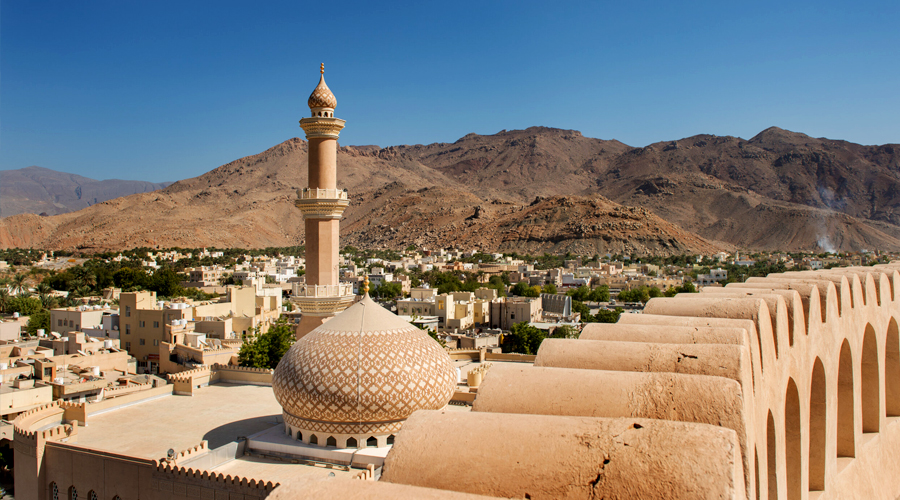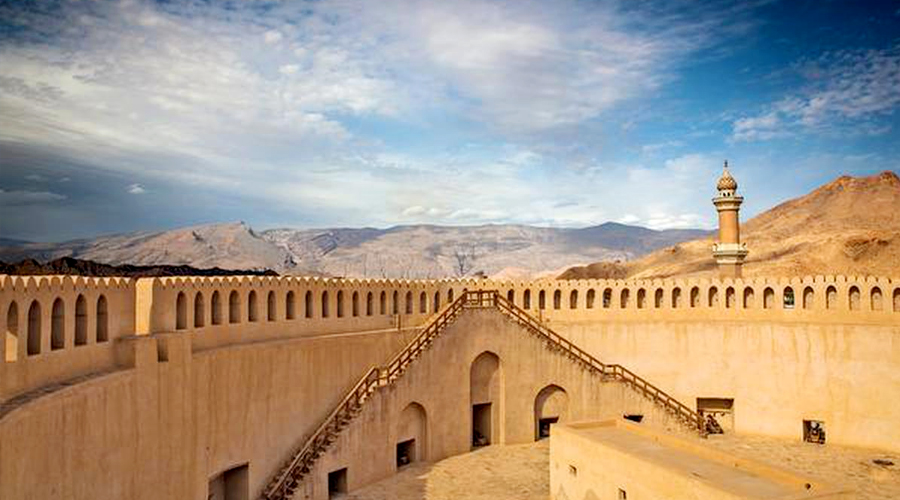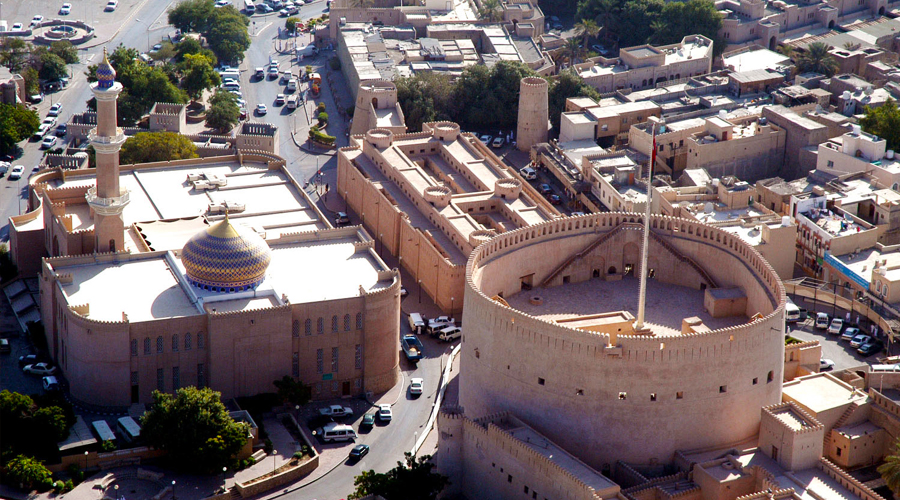Nestled in the heart of Oman, Nizwa Fort is a proud testament to the nation’s rich history and architectural brilliance. This iconic structure, built in the 17th century by Imam Sultan bin Saif Al Yarubi, showcases Oman’s strategic significance and cultural heritage. With its imposing central tower, expansive courtyard, and intricate defensive features, the fort offers visitors a window into a time when it served as both a military stronghold and an administrative hub. Today, it invites travelers to explore its timeless charm, delve into fascinating exhibits, and enjoy breathtaking views of the surrounding city and mountains. For an unforgettable way to experience the rugged beauty surrounding Nizwa, discover why a 4×4 adventure in Oman is the perfect complement to your cultural journey.

Historical and Strategic Importance of Nizwa Fort
Constructed in the mid-17th century by Imam Sultan bin Saif Al Yarubi, Nizwa Fort is one of Oman’s most enduring landmarks. Designed to protect the city against invaders, the fort reflects the military ingenuity of the Yaruba dynasty during Oman’s golden age. Its foundation, dating back to the 12th century, combines earlier structures with advanced architectural techniques of its time.
The massive circular tower, built to withstand cannon fire, features hidden traps and secret passages that reveal its strategic importance. Beyond its defensive role, the fort served as a center of governance, commerce, and learning, solidifying its pivotal role in Omani history.
As the capital of the Yaruba dynasty, Nizwa thrived as a hub of trade, culture, and Islamic scholarship. The fort’s strategic location provided a commanding view of the surrounding mountains and date plantations, enabling early detection of threats. It stood as a bastion of stability and a protector of the city’s prosperity.
Architectural Marvels of Nizwa Fort
Nizwa Fort’s architecture is a striking blend of resilience and ingenuity. Its most iconic feature, the central circular tower, rises 30 meters high and spans 36 meters in diameter, a formidable structure designed to endure cannon fire and other attacks. The fort’s design includes narrow staircases, concealed trapdoors, and secret escape routes, showcasing its tactical brilliance.
Windows and cannon slots are strategically placed to provide defenders with a comprehensive view of the surrounding landscape, while underground wells ensured a reliable water supply during prolonged sieges. Beyond its defensive elements, the fort symbolized governance, law, and community life, making it a vital hub in Oman’s history.
Key Attractions at Nizwa Fort
Visitors to Nizwa Fort can explore a variety of captivating attractions:
- The Tower: Rising 30 meters, the circular tower offers panoramic views of Nizwa and the surrounding mountains, ideal for photography and historical appreciation.
- Cannon Displays: Original cannons strategically placed throughout the fort reflect its defensive legacy.
- Traditional Omani Rooms: Restored living quarters and meeting rooms provide insight into traditional Omani architecture and lifestyle.
- Museum Exhibits: Interactive displays showcase historical artifacts, ancient weaponry, and traditional crafts, celebrating Nizwa’s rich heritage.
- Underground Wells: Ingenious water supply systems that sustained the fort during sieges.
- Secret Passages: Hidden routes used for tactical retreats and communication during conflicts.
- Souvenir Shops: Local crafts and mementos are available for visitors to commemorate their trip.

Fascinating Facts About Nizwa Fort
- Oldest Fort in Oman: Built in the 17th century, it stands as one of Oman’s most iconic and enduring forts.
- Massive Central Tower: Measuring 30 meters in height and 36 meters in diameter, the central tower offered a strategic vantage point.
- Boiling Oil Defense: Defenders used boiling oil to repel attackers attempting to breach the gates.
- Complex Defense Layout: The maze-like design, with narrow staircases and traps, was crafted to confuse and slow down enemies.
- Astronomical Significance: The fort was a key site for observing celestial events and determining Islamic prayer times.
- Trading Hub: Positioned at the crossroads of trade routes, the fort housed spaces for merchants to store goods like dates, spices, and textiles.
The Nizwa Souq Connection
Just steps away from the fort lies Nizwa Souq, one of Oman’s most vibrant traditional markets. Historically, the souq served as a vital center for commerce, attracting traders from across Oman and beyond. The fort’s proximity provided security, ensuring trade could flourish in a protected environment.
Today, the souq complements the fort’s historical significance by offering a lively marketplace where visitors can find traditional products such as silverware, pottery, spices, and fresh produce, alongside modern goods. This connection between the fort and souq highlights Nizwa’s enduring reputation as a center of trade and tradition.
Immerse Yourself in History
Nizwa Fort is more than just a historical monument, it’s a gateway to Oman’s rich heritage. Whether exploring its defensive structures, marveling at its panoramic views, or wandering through the bustling souq, visitors are transported to a time of resilience, culture, and ingenuity. A visit to Nizwa Fort promises not just a journey into the past but an unforgettable experience that celebrates Oman’s enduring legacy. To truly immerse yourself in the heart of this remarkable country, explore our full range of Oman tours designed for cultural and adventurous travelers alike.

